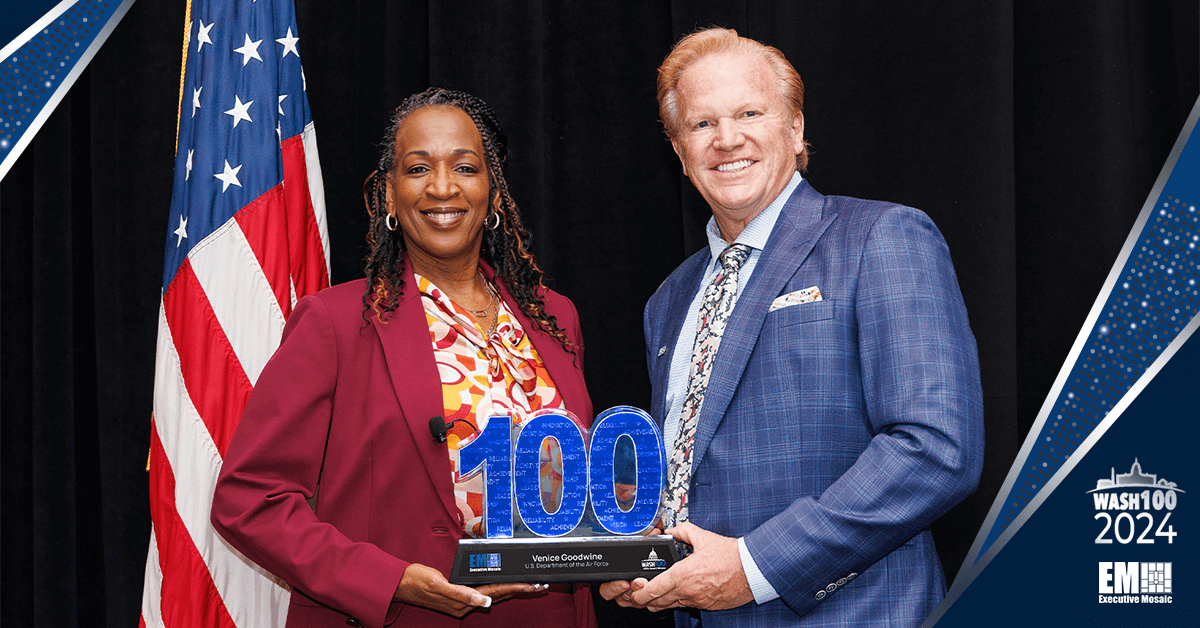Venice Goodwine, the Department of the Air Force’s chief information officer, accepted her 2024 Wash100 Award from Executive Mosaic CEO Jim Garrettson during the Potomac Officers Club’s 2024 Air Defense Summit.
Garrettson founded the Wash100 Award in 2014 to celebrate the foremost change-makers shaping the government contracting field. Winners come from both the public and private sides of the GovCon equation, as both play an important role in ensuring the industry’s success. EM’s discerning voting body chooses those they see as exceptionally visionary leaders innovating in the marketplace.
Goodwine started as the department’s chief information officer in August 2023. Since then, she has aided numerous transformative IT initiatives, including NIPRGPT, cloud expansion efforts and the Hypori Halo Workspace Anywhere application.
Her role in steering the Air Force’s IT investment strategy in upcoming technologies earned her a well-deserved spot in the 2024 Wash100 roster for the first time.
“Venice’s deep expertise in enterprise IT, information security and intelligence — and her long career with the Air Force — well position her to oversee the service’s $17 billion portfolio. We’re confident Venice will help shepherd in a new era of technological dominance and power projection for the Air Force, earning her distinction as a Wash100 recipient,” Garrettson said of Goodwine’s win.
In her keynote address at the Air Defense Summit, Goodwine updated the audience on NIPRGPT’s early progress and discussed her approach to AI.
Congratulations to Goodwine on this monumental win! Executive Mosaic is proud to count her amongst the highly selective honoree list.



